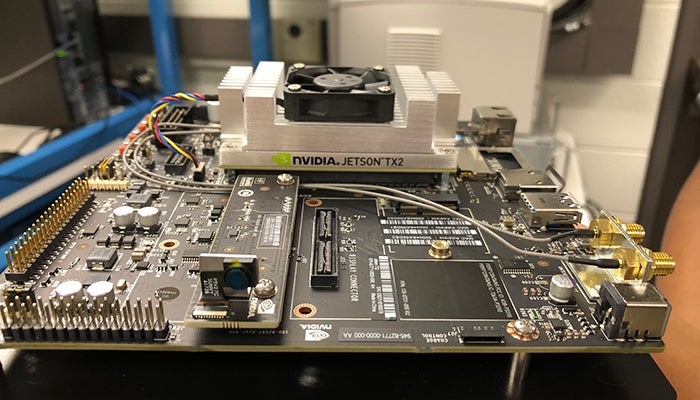Luigi Vanfretti ’09 and his ALSETLab research group are advancing a robust, responsive smart grid that would allow a disjointed network of power systems to talk to one another and, ultimately, predict the impact that hurricanes, earthquakes, and other major events would have on a region’s power supply.
Vanfretti describes this digital power grid of the future as “the internet of the power grid.”
“The process of operating and maintaining grid functions is fairly complex. And when we have a major event, even though there are procedures in place, there is limited predictive power on the impact it’s going to have,” says Vanfretti, associate professor of electrical, computer, and systems engineering at Rensselaer. Vanfretti, who earned his master’s and doctoral degrees in electric power engineering from Rensselaer, specializes in cyber-physical power systems analysis.
Cyber-physical systems are a new generation of “smart” systems with integrated computational and physical capabilities that can interact with humans.
In building ALSET (Tesla spelled backward, it stands for the Analysis Laboratory for Synchrophasor and Electrical Energy Technology), Vanfretti and his research group of undergrads are developing concepts, models, methodologies, and tools for a robust digital power grid that will integrate renewables and adapt quickly to new and emerging technologies.
It Works Like This
ALSET uses a real-time hardware-in-the-loop (HIL) system supported by four 32-core, real-time computers capable of simulating a very large power network or a microgrid, running several projects at the same time. This cyber-physical system can test and simulate complex systems based on realistic virtual stimuli using critical digital real-power network equipment. It allows Vanfretti and his students to look at failures of the grid and then, based on the model’s simulation real-time data, develop new methods, software algorithms, or devices that detect such vulnerabilities as GPS malfunctions or cyber intrusions, or predict future power outages.
“It’s impossible to predict exactly. But we can predict better,” he says.
The virtual system performs functions that today’s real-time power systems cannot perform without shutting down at least a portion of the grid, an activity that would cut power to users or possibly create a catastrophe that can’t be fixed.
“There’s also the matter of renewables,” says Vanfretti, who explains that current monitoring and control technology is too slow to track exactly when solar, battery and other renewable resources are powering their energy back to the grid. For example, energy transmission at a solar farm can decline from 100 percent to 20 percent in seconds. By the time our current technology tracks the changes, they’ve already occurred.
Cyber-Physical, You Say?
Last year, excited by the Institute’s exceptional pool of students and its signature Energy, Environment, and Smart Systems research thrust of meeting the global population’s energy needs while addressing environmental sustainability, Vanfretti left the KTH Royal Institute of Technology in Sweden to become a faculty member at Rensselaer.
Another of his goals is keeping Rensselaer engineering graduates competitive with international applicants so they can pursue their master’s degrees here. Having these unique skills in cyber-physical systems will set Rensselaer’s applicants apart from their peers, Vanfretti says.
For example, four sophomores worked in the ALSETLab this past summer making circuits and software for open-source sensors.
“To work with this technology, we have to do things that are outside the curriculum because the curriculum doesn’t evolve as quickly as technology,” Vanfretti says.
To give his students even more opportunities to work with leading-edge technologies, Vanfretti will pursue collaborative ventures with the New York Power Authority’s (NYPA) AGILe Lab, a similar infrastructure being deployed in White Plains. AGILe, or the Advanced Grid Innovation Lab for Energy, tests, models, and creates new solutions for energy systems.
Vanfretti wants to bridge the disconnect between the academic community, which sees the urgency in building a truly robust smart grid, and the utility companies that are dragging their heels.
“This is really a complex time in the industry,” Vanfretti says. “Electrical power really has to transform and become part of the digital revolution.”




